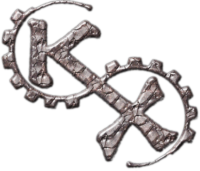3D Subsurface Geo-Imaging/ Geophysical Survey
Deep subsurface geophysical surveys conducted with the most advanced “real time” scanning technology available today.
Utilizing passive magnetic phase reading of the magnetic field at a 58,000 per second sample rate with aerospace quality sensors, this technology can effectively map subsurface features and materials in high detail. At 100′ deep, it’s effective depth range far exceeds any GPR platforms and with live balancing interpolation it is far more accurate than any geo-resistivity or pulse induction device. We use a particular model that is small and very portable allowing for use in virtually any terrain no matter how rugged. With proper data interpolation and use, details can be measured in 3D and voids and back-fill regions are easy to discern.

With repeated scans and comparative analysis is it possible to conduct material discrimination and discriminate between ferrous and non-ferrous metals. Wood, bone, copper, plastic, even water and chemical leakage plumes can be mapped where these may be invisible to other forms of technologies. In this image we see descending ramps, water leakage into two back-filled tunnels and the deep vertical shaft with its top over 60′ below ground level.

Even deep voids covered with various layers of virgin and fill materials can be seen and imaged in detail. This is a shaft that has an ancient poured concrete capstone that is buried over 60′ deep. The shaft is open under this capstone and extends at least another 90′ deeper and has a load landing on one side.

The ability to scan and see the results in real time as they happen puts this technology in another arena entirely. Allowing a live feed to a remote computer the operator can reference anomalous points instantly. This provides for quick reference to surrounding terrain and points of interest. As well as obvious signal source response like shallow roots, scrap iron etc… Helping to improve accuracy and reduce re-scans. As we see in this image, accurately mapping the subsurface geology is possible with correct interpolation.
Large areas can be mapped in a relatively short time. This is an ancient mine network with two major gold caches intact. Vertical shafts, addits, entrances, drifts, tunnels, chambers and two major chimney’s stoped out over 100′ deep. The gold targets are pointed out in purple. The extreme left center photo insert is one of the stacks of gold with a residual electron vortex being “blown” or swept up to the left and shows as a ghost of the stack itself (refer to following image). This tells us this is a non-ferrous and highly conductive metal.

This is a view into one of the chambers, it is located on the previous image as the extreme left center insert. The geometric shape is the stack of gold and we can see the “ghost” of that shape being cast to the bottom left by the earths magnetic field like a “wind”. This stack equates to be in excess of 70,000 lbs of gold alloy 60% to 80% purity and partially containing silver and copper.




Hey Rob this is Dr. Evan your friend from madrid. Please get in touch with me @ the email below or @ my facebook page carmello baez